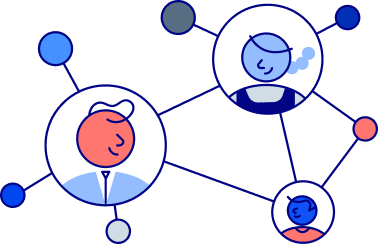When going through the job search process, international students face many obstacles as they look for roles. While some of those difficulties may be obvious, there are many obstacles that international students may be unaware of. Here are five major challenges international students must overcome in order to be fully competitive and to successfully get a job in the U.S.
Challenge #1: Communication Barriers
Communication challenges are one of the top reasons employers do not hire international students. Hiring processes consist of phone screens and interviews, both of which focus strongly on an applicant’s ability to communicate. However, many international students face challenges in this area, as most are non-native English speakers who are often not fully acquainted with American expressions and body language.
Thankfully, there are several ways international students can improve their communication skills and excel in the interview process.
- Socialize with other students on campus. Make American friends and interact with them consistently to learn American slang and colloquialisms.
- Practice speaking professional English and using proper body language through mock interviews (practice interviews with other students or advisors), informational interviews (informal conversations with professionals), and networking events.
- Leverage writing centers at universities to improve your written communication, such as writing cover letters or emailing with recruiters and hiring managers.
Challenge #2: Cultural Differences
Another common obstacle international students face is cultural differences. American culture and one’s native culture can differ greatly in the professional setting. This can lead to issues if a student’s native culture conflicts with what U.S. employers expect. For example, many European countries work a set number of hours a week, while many Americans are expected to work over 40 hours a week. Some countries also focus less on punctuality in the workplace compared to the strict standards for punctuality expected in the U.S.
To best overcome these cultural conflicts, international students can assimilate with American culture and workplace expectations. Through socializing and making friends with American students, assimilation will come more naturally, and American friends can help international students as they go through the hiring process.
Challenge #3: Limited Career Opportunities
International students face the difficulty of having limited career options. Gaining sponsorship is competitive, and there are many companies that do not offer visa sponsorship at all. International students are also at a disadvantage during the hiring process, as they have limited time in the U.S. to gain American work experience and build their resume.
However, international students can improve their career opportunities and increase their chances at landing a U.S. job. First, those studying STEM majors have a statistically higher chance of obtaining a job, as STEM skills are in high-demand. STEM majors also receive an extra 24-month OPT extension in addition to the normal 12-month extension.
For those who are not STEM majors, it is still important to choose a major and degree program that has decent job opportunities in the U.S. For instance, art majors may find it difficult to obtain a high-paying job, compared to a more employable major like finance. International students should research potential career paths that fit their major, and also figure out which employers provide sponsorships, have internship openings, and offer career advancement opportunities. Interstride’s portal can provide major visa insights on the top companies based on their field, experience level, and/or visa type.
Challenge #4: Lack of a Professional Network
Did you know that most jobs and internships in the U.S. are filled through personal connections? According to HubSpot, 85% of jobs are filled through networking. Because international students usually lack a professional network within the U.S., this can be a difficult hurdle to overcome.
It is important for international students to build their network as they study in the U.S. This can be done through several ways, often through different channels. Relationships can be formed and built by networking and messaging people on LinkedIn, connecting with school alumni, leveraging university mentorship programs, going to on- and off-campus career fairs, and attending professional networking events.
Challenge #5: Time Constraints
Even if you do everything right, international students are still faced with strict timelines for finding jobs and obtaining the proper U.S. work authorizations. This time crunch can be difficult to overcome, especially in times of economic uncertainty when employers slow hiring or stop providing sponsorship. The job search can take a long time, and the process of preparing your resume, applying for jobs, and interviewing can take anywhere from weeks to months.
Even though international students can not change deadlines, they can be aware of key deadlines and prepare ahead for them the best they can. Staying organized, tracking specific dates, and consistently researching job opportunities are essential ways to stay on track. International students should leverage their institution’s career center and international office in their job and internship search.
Final Thoughts
Despite the obstacles most international students face, many can be overcome with proper preparation and effort. At Interstride, we provide resources for job search strategies, interview preparation, and more. Log in to find employment opportunities that offer visa sponsorship to international students.























